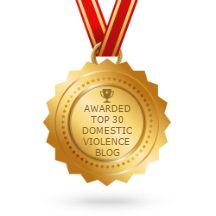 Violence against women continues as an epidemic. Planning for safety can be one way women can take back power in abusive relationships. One in three women, in their lifetime, experience abuse including emotional, physical and/or sexual violence in an intimate relationship. The abusive partner is completely responsible for their behaviour and for ceasing the use of violence and abuse.
Violence against women continues as an epidemic. Planning for safety can be one way women can take back power in abusive relationships. One in three women, in their lifetime, experience abuse including emotional, physical and/or sexual violence in an intimate relationship. The abusive partner is completely responsible for their behaviour and for ceasing the use of violence and abuse.
If you’re in an abusive relationship, planning for safety can help you evaluate, define options and opportunities for liberation and freedom. The risk of lethal violence increases during or just after a woman has left an abusive partner, therefore planning for safety is critical.
Take Back Your Power!
“Just as abusers continually shift their tactics of power and control, your safety plan is an adaptable tool to help keep you safe in your ever-changing situation.[1]”
Safety is always at the centre of our work at Battered Women’s Support Services. You may call BWSS Crisis & Intake Line at 604-687-1867 or toll free at 1-855-687-1868 for support and information.
If you are in an abusive relationship, remember that reading or researching online may also present risks, you can log off the page quickly by clicking the EXIT button on the of the page.
The following steps represent my plan for increasing my safety and preparing in advance for the possibility for further violence. Although I do not have control over my partner’s violence,I do have a choice about how to respond to him/her and how to best get myself and my children to safety.
PERSONALIZED SAFETY PLAN
Safety during a violent incident. Women cannot always avoid violent incidents. In order to increase safety, women may use a variety of strategies. I can use some or all of the following strategies:
A. If I decide to leave, I will _________________________________. (Practice how to get out safely.
What doors, windows, elevators, stairwells, or fire escapes would I use?)
B. I can keep my purse and car keys ready and put them _______________________ (place) in order to
leave quickly.
C. I can tell _________________________________ about the violence and request they call the police
if they hear suspicious noises coming from my house.
D. I can teach my children how to use the telephone to contact the police and the fire department.
(Be careful about placing responsibility on children.)
E. I will use _________________ as my code word with my children or my friends so they can call for help.
F. If I have to leave my home, I will go _________________________. (Decide this even if I do not think there
will be a next time.) If I cannot go to the location above, then I can go to ______________________________ or ________________________________.
G. When I expect we are going to have an argument, I will try to move to a space that has fewer risks, such as __________________________. (Try to avoid arguments in the bathroom, garage, kitchens, near weapons, or
in rooms without access to an outside door.)
H. I will use my judgment and intuition. If the situation is very serious, I can give my partner what he/she wants to
calm him/her down. I have to protect myself until I/we are out of danger.
Safety when preparing to leave. Risk of harm and violence often escalates when a woman decides to leave
an abusive relationship. I can use some or all of the following strategies:
A. I will leave money and an extra set of keys with ___________________________ so I can leave quickly.
B. I will keep copies of important documents or keys at __________________________________.
C. To increase my independence, I will open an individual savings account by _______________________ (date), or
I will find a safe place to hide cash.
D. Other things I can do to increase my independence include: _____________________________________________________________
E. Battered Women’s Support Services number is 604-687-1867. I can seek a transition house by calling Victim Link 1-800-563-0808. I will call ahead of time to find out the procedure for admission to the transition house.
F. I will check with ____________________________________ and ________________________ to see who would be able to let me stay with them or lend me some money.
G. I can leave extra clothes with _________________________________.
H. I will sit down and review my safety plan every ______________________ (no more than six weeks) in order to plan the safest way to leave the residence. _____________________________ (an advocate or friend) has agreed to help me review this plan.
I. I will rehearse my escape plan and, as appropriate, practice it with my children.
J. If and/when I leave I will take all my children with me.
Safety in my own residence. There are many things that a woman can do to increase her safety; these measures can be added step by step. Safety measures I can use include:
A. I can change the locks on my doors and windows as soon as possible.
B. I can replace wooden doors with steel/metal doors.
C. I can install security systems including additional locks, window bars (not generally recommended due to fire escape hazards), poles to wedge against doors, an electronic system, etc.
D. I can purchase rope ladders (“fire ladders” are available from hardware and discount stores) to be used for escape from second floor windows.
E. I can install smoke detectors and purchase fire extinguishers for each floor in my house/apartment.
F. I can install an outside lighting system that lights up when a person is coming close to my house (motion detectors).
G. I will teach my children how to use the telephone to make a collect call to me and to ________________ (friend/family/other) in the event that my partner takes the children.
H. I will tell people who take care of my children which people have permission to pick up my children and that my partner is not permitted to do so. Some will require a court order. The people I will inform about pick -up include:
____ (school),____ (day care staff),____ (babysitter),____ (teacher), and____ (others such as neighbors).
Safety with a Protective Order. I recognize that I may need to ask the police and the courts to enforce my Protective Order. The following are some steps that I can take to help the enforcement of my Protective Order:
A. I will keep my Protective Order (and/or probation orders or other such legal documents) __________________________________ (location). (Always keep it on or near my person. If I change purses that is the first thing that should go in it.)
B. The telephone number for the Crown Counsel and local law enforcement agency is _______________.
C. I can call Battered Women’s Support Services if I am not sure about protection orders, or if I have some problems with my Protective Order. The number to call is 604-687-1867.
D. I will inform my employer, my closest friend, and _____________________________ (other) that I have a Protective Order in effect. (I may give them copies, too.)
E. If my partner violates the Protective Order, I can call the police and report a violation, contact the Crown Counsel, and/or call my advocate. (Make sure it gets documented!!!)
If the police do not help, I can contact my advocate or Watch Commander at the Police Department to file a complaint. My advocate’s name is ______________________ and phone number is _________________. The Crown Counsel’s name is ____________________and phone number is ____________________.
Safety on the job and in public. Each woman must decide if and when she will tell others that her partner has battered her and that she may be at continued risk. Friends, family, and coworkers can help to protect women. Each woman should consider carefully which people to invite to help secure her safety. I might do any or all of the following:
A. I can inform my boss, the security supervisor, and ______________________________ (other) at work of my situation.
B. I can ask _____________________________ to help screen my telephone calls at work.
C. When leaving work, I can __________________ _____________________________.
D. When driving home, if problems occur, I can_____________________________________________.
E. If I use public transit, I can ____________ _____________________________.
F. I can use different grocery stores and shopping malls to conduct my business and shop at hours that are different from those hours in which I shopped when I resided with my battering partner.
G. I will always remember to be careful and watchful of my surroundings.
Safety and drug or alcohol use. The use of any alcohol or other drugs can reduce a woman’s awareness and ability to act quickly to protect herself. Furthermore, the use of alcohol or other drugs by the batterer may give him/her an excuse to use violence. Therefore, in the context of drug or alcohol use, a woman needs to make specific safety plans. If drug or alcohol use has occurred in my relationship, I can enhance my safety by doing some or all of the following:
A. If I am going to use, I can do so in a safe place and with people who understand the risk of violence and are committed to my safety.
B. I can also _________________________________________________.
C. If my partner is using, I can _____________________________.
D. To safeguard my children, I might ________________________________________ and _____________________________________.
Safety and my emotional health. The experience of violence is usually exhausting and emotionally draining. The process of building a new life for myself takes MUCH COURAGE AND INCREDIBLE ENERGY. To conserve my emotional energy and resources and to avoid hard emotional times, I can do some of the following:
A. If I feel down and ready to return to a potentially abusive situation, I can
______________________________________ and ___________________________________.
B. When I have to communicate with my partner in person or by telephone, I can ________________________________ and ___________________________________.
C. I can try to use “I can …” statements with myself and to be assertive with others.
D. I can tell myself “__________________________________________” whenever I feel others are trying to control me.
E. I can read ___________________________________________ to help me feel stronger.
F. I can call ____________________________________, __________________________________, and _____________________________ as other resources to be of support to me.
G. Other things I can do to help myself feel stronger are ______________________________________ and _______________________________________.
H. I can take care of myself by _____________________________________________________.
I. I can attend workshops and support groups at Battered Women’s Support Services or _______________________________________, or ____________________________________ to gain support and strengthen my relationships with other people.
Items to take when leaving. When I leave, I should take:
Identification for myself such as birth certificate, immigration documentation, passport
Children’s birth certificates, passports
Social Insurance cards, medical records (all family members)
School and vaccination records, insurance papers
Driver’s license and vehicle registration
Money Marriage/divorce certificates
Cheque book, ATM card, address book
Credit cards, picture IDs
Keys: House, car, office
Medications
Children’s favorite toys and/or blankets, items of special sentimental value
You can download Personalized Safety Plan here.
Last year, Battered Women’s Support Services responded to over 10,000 crisis calls from women and girls to get help and end violence. We could not provide this essential support without your contribution. 
[1] The Missouri Coalition against Domestic Violence, A Framework For Understanding the Nature and Dynamics of Domestic Violence





